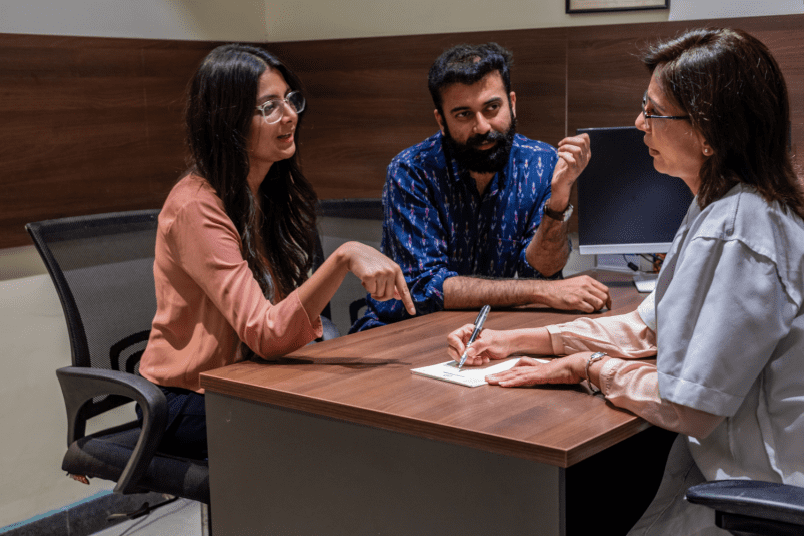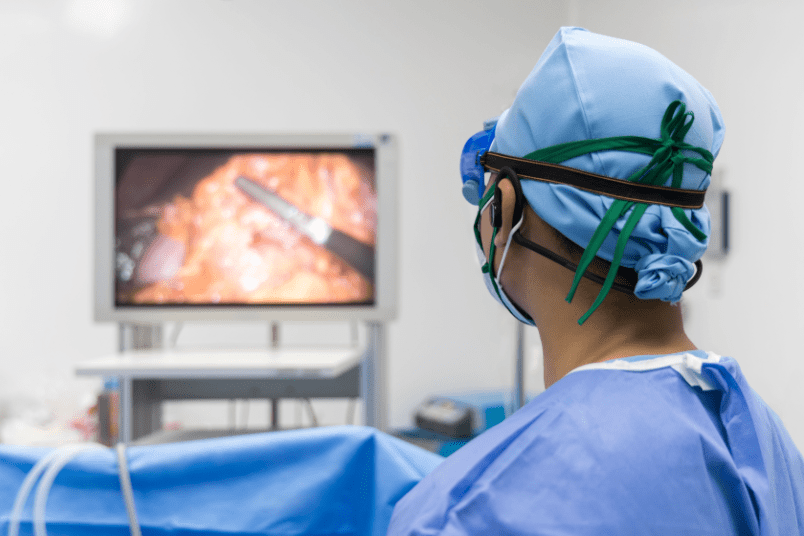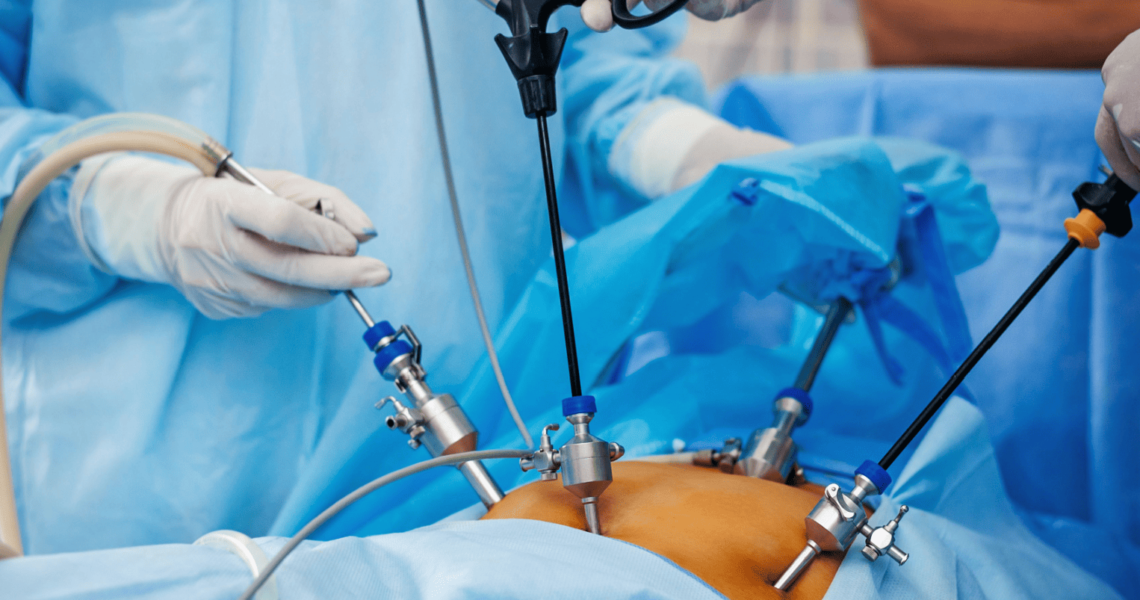Laparoscopy, a minimally invasive surgical technique, plays a pivotal role in diagnosing and treating infertility. This procedure involves inserting a camera through a small incisions, providing a detailed view of the reproductive organs. In the realm of infertility, laparoscopy aids in identifying and addressing issues such as endometriosis, pelvic adhesions, or structural abnormalities. By offering a precise and less invasive alternative to traditional surgeries, laparoscopy minimizes patient recovery time and discomfort. Its ability to uncover and treat underlying causes of infertility marks it as a valuable tool in the journey toward achieving conception for couples facing reproductive challenges.
Why is laparoscopy performed for Infertility?

Laparoscopy is performed in infertility cases to diagnose and treat underlying conditions affecting fertility. Commonly, it addresses endometriosis, a condition where tissue similar to the uterine lining grows outside the uterus, potentially hindering conception. Additionally, laparoscopy tackles pelvic adhesions, which may impede reproductive organ functioning. Structural abnormalities, such as blocked fallopian tubes, can also be corrected through this minimally invasive procedure. Symptoms such as chronic pelvic pain, irregular menstrual cycles, or unexplained infertility prompt consideration of laparoscopy. By precisely identifying and addressing these issues, laparoscopy enhances the chances of successful conception for individuals struggling with infertility.
How to prepare for laparoscopy?

The following are the various preparatory steps to promote a successful and comfortable laparoscopy experience. These include:
Consultation and Information Gathering: Start your preparation by scheduling a thorough consultation with your healthcare provider. It is important to discuss your medical history, any allergies, and current medications. Do not hesitate to clarify your doubts about the procedure and its purpose.
Preoperative Testing: Your healthcare team may order preoperative tests, such as blood work or imaging, to assess your overall health and identify potential risks that might alter the outcomes.
Fasting and Medication: Typically, you’ll be instructed to fast for several hours before the procedure. Follow specific guidelines provided by your healthcare team regarding diet and medications.
Arrangements for Transportation: Arrange someone to drive you home after the procedure, as the effects of anaesthesia may alter your consciousness.
Preparing Your Home: Set up a comfortable recovery space at home. Ensure you have the necessary supplies and assistance for the initial post-operative period.
Mental Preparation: Address any anxiety by discussing concerns with your healthcare team. Mental preparedness is crucial for a smooth recovery.
What is the Procedure for Laparoscopy?

The laparoscopy procedure involves the following steps:
Anaesthesia Administration: The patient is administered general anaesthesia to induce a state of unconsciousness, ensuring comfort throughout the procedure.
Creation of Incisions: Small incisions, usually less than an inch, are made near the surgical site. These serve as entry points for the laparoscope and other surgical instruments.
Gas Insufflation: Carbon dioxide gas is introduced into the abdominal cavity to create a space, allowing better visualization and manipulation of internal organs.
Insertion of Laparoscope: A laparoscope is a device made of a thin tube with a camera and light source. It is inserted through one of the incisions and provides real-time images of the abdominal area on a monitor during the procedure.
Exploration and Diagnosis: The surgeon examines the pelvic and abdominal organs for abnormalities. Specific attention is given to the uterus, fallopian tubes, and ovaries in the context of infertility investigations.
Surgical Intervention: If issues such as endometriosis or adhesions are identified, specialized instruments are introduced through additional incisions for precise surgical correction.
Closure of Incisions: Once the procedure is complete, the instruments are removed, and incisions are closed with stitches or adhesive strips.
Recovery and Observation: The patient is moved to a recovery area, where vital signs are monitored as the effects of anesthesia wear off.
What is the cost and insurance coverage of laparoscopy in India?

The cost of laparoscopy surgery for infertility in India can vary depending on the specific procedures performed and the clinic or hospital chosen. Factors influencing cost include the complexity of the surgery additional expenses like preoperative tests. It is advisable to consult healthcare providers to get precise estimates and discuss potential financial considerations associated with laparoscopy for infertility in the Indian healthcare system.
Insurance coverage for laparoscopy surgery for infertility depends on the specific policy and diagnosis. Some insurance plans may cover the procedure if it is deemed medically necessary for the diagnosis and treatment of infertility. However, coverage policies can vary, and pre-authorization may be required. Patients should contact their insurance providers beforehand to understand their coverage and potential out-of-pocket expenses.
What is the recovery time for laparoscopy?

One of the primary benefits of laparoscopy is the quicker recovery time compared to traditional open surgeries. Most patients can go home on the same day or the day after the procedure and can resume normal activities within a week. The small incisions result in less pain and scarring, contributing to a faster return to normal activities. Mild discomfort, bloating, or shoulder pain may occur but typically subside within a few days. However, it is recommended to abstain from strenuous activities for several weeks to ensure optimal healing. Regular follow-up visits with the healthcare professional are essential to monitor the progress of healing. Overall, the minimally invasive nature of laparoscopy contributes to a faster recovery compared to traditional surgical approaches.
In conclusion, laparoscopy stands as a vital and effective tool in addressing infertility by providing accurate diagnosis and targeted treatment. It’s minimally invasive nature minimizes recovery time, offering a favorable option for those seeking fertility solutions. From identifying conditions such as endometriosis to enabling precise surgical interventions, laparoscopy plays a pivotal role in enhancing the chances of successful conception. As a well-established and widely utilized procedure, it continues to contribute significantly to the field of reproductive medicine, benefiting individuals on their fertility journeys.
In Bangalore, India, NU Fertility stands out as a top choice for infertility treatment through laparoscopy. Renowned for its advanced medical facilities and experienced specialists, NU Fertility Hospitals prioritize patient care. Their expertise in laparoscopic procedures positions them as a reliable option for individuals seeking effective and compassionate infertility solutions in India.
References:
-
- Laparoscopy for Infertility. University of UTAH.
https://healthcare.utah.edu/fertility/treatments/surgery/laparoscopy.
- Diagnostic laparoscopy for unexplained subfertility. National Health Library.
https://www.ncbi.nlm.nih.gov/pmc/articles/PMC8769170/.
- Laparoscopy for Infertility. University of UTAH.
Author: Dr. Sneha J



